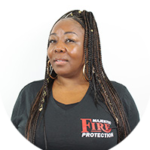NFPA 15 Standard for Water Spray Fixed Systems for Fire Protection
Fire safety is of prime importance while designing any building to ensure the protection of occupants as well as the facility. Fire safety equipment is installed in almost every building in America, but it does not mean that fire will never happen.
Fire is an unpredictable catastrophe that can start at any time. So, one needs to be always ready to combat such contingencies. To handle the fire at the most appropriate time, one 'requires adequately installed and functional fire safety equipment such as Water Spray Fixed Systems.
What is Water Spray System?
Water Spray System is a fixed pipe system that is connected with a water source and spray nozzle. The system is associated with the automatic detection system or fire alarm to get activated in case of fire.
Upon activation, it supplies water at a high pressure to control the fire. Water Spray System is employed to protect from fire caused by flammable liquid, gases, oil switches, electrical equipment such as transformers, etc.
NFPA 15: Standard for Fixed Water Spray Systems
All the instructions relevant to the water spray system are provided by NFPA 15. NFPA 15: Standard for Water Spray Fixed Systems for Fire Protection helps control fire by giving guidance about water spray system layout and proper testing and maintenance of the system.
Selection of a nozzle according to NFPA 15
NFPA 15 contains all the instructions for selecting the correct spray nozzle to achieve the proper coverage area and water density requisite to extinguish the fire.
The nozzle selection under NFPA 15 involves considering different factors such as the purpose of the system, discharge characteristics of the nozzle, thermal draft condition, equipment configuration, and atmospheric conditions.
NFPA 15 provides the method to determine the range of water spray by measuring velocity and water droplet size. Velocity is an important factor while selecting a proper nozzle for a fixed water spray system, and no one can change a nozzle without fulfilling the requirements of NFPA 15 standard.
Requirements for proper pipes and hangers selection
Apart from nozzles, the standard covers all necessary recommendations regarding water spray system pipe, fittings, and hangers. According to NFPA 15, Pipe hangers and support should be designed to endure the impact of maximum operating pressure. The standard requires the pipes capable of withstanding at least 175psig water pressure so that they do not collapse in case of emergency.
All the pipes and fittings should be made of anti-corrosive material, and they should be galvanized to ensure maximum protection. If the galvanization is damaged at any point, the exposed steel should be covered with resistant paint.
Actuation valve for fixed water spray system
Under the recommendations of NFPA 15, each water spray system must possess system actuation valves (for opening and closing of the system) to control the flow of water. Actuation valves are required both for manual as well as automatic operation.
In a manual system, these actuation valves should be present on the access points, easy to identify in an emergency. In addition to these valves' locations, NFPA 15 covers all requirements for the types of valves.
System actuation valves that are required for automatic systems are known as deluge valves. NFPA 15 ensures that these valves are properly regulated hydraulically, electrically, or mechanically to spray water when needed.
Instructions for proper inspection and maintenance of fixed water spray system
Apart from proper design and fitting of fixed water spray systems, NFPA 15 makes sure the appropriate maintenance and inspection of the system to avert the fire danger.
It ensures :
· Adequate water supply
· Annual inspection and cleaning of nozzles and strainers
· Proper cleaning and calibration of values and detectors
Conclusion
Fixed water spray systems provide safety and protection against fire, but they can only work effectively when they comply with the requirements of NFPA 15. NFPA 15 covers all instructions and requirements for optimal functioning and maintenance of fixed water spray systems.
.



